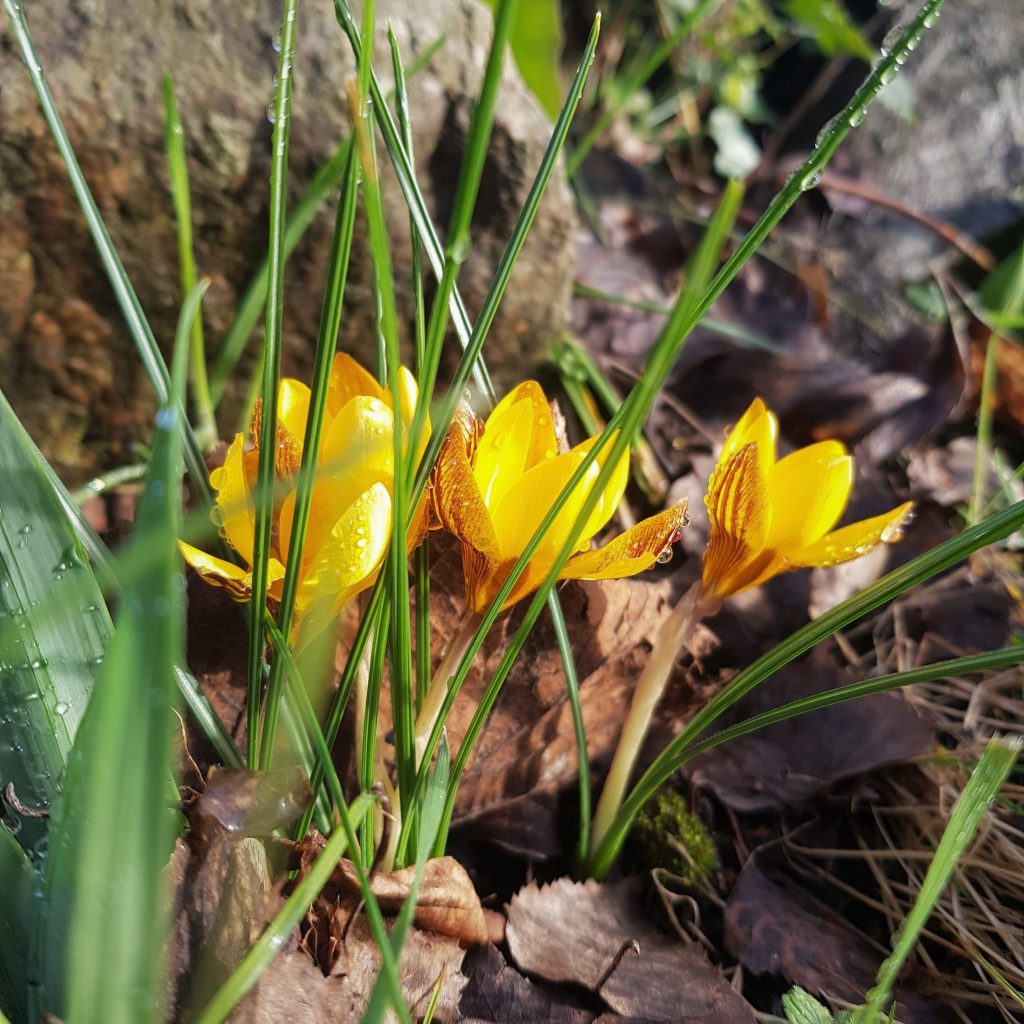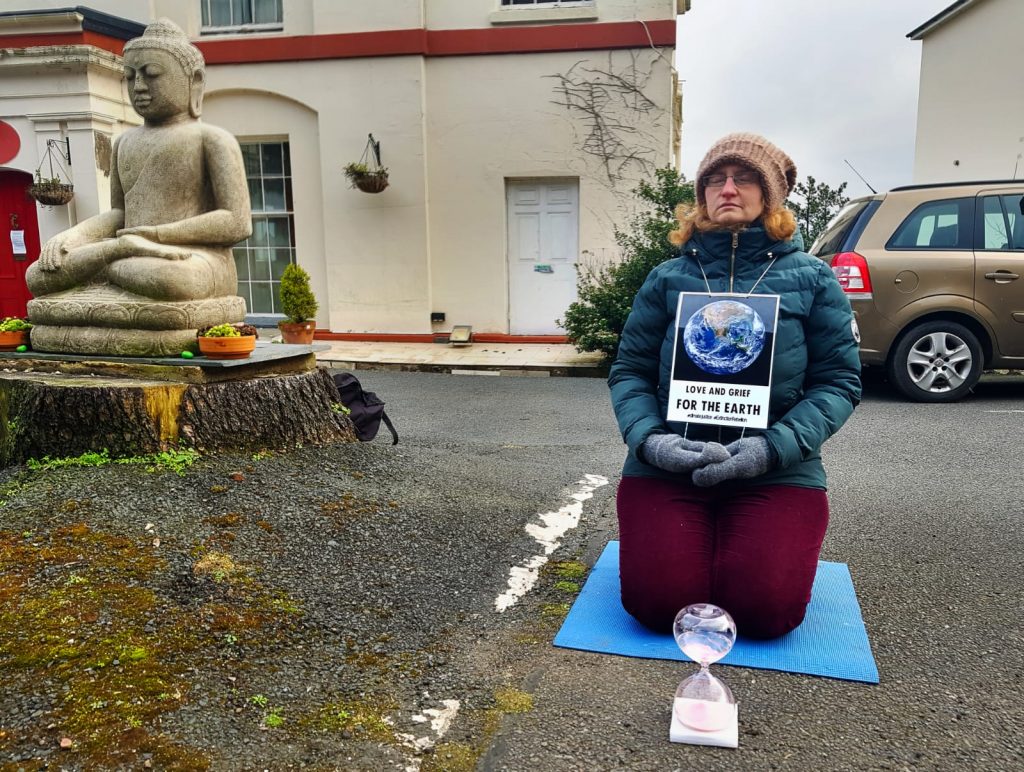Wild Meditation Diary 1
by Kaspa

Recently I’ve started practising outdoors now and again. I long to go out to a truly wild place and sit in meditation there, but under current lockdown guidelines we are only supposed to go outside for exercise including a short rest of up to a minute…
As I wondered down to the bottom of the garden this morning I was conscious of the many human hands that cared for and curated this space as well as the non-human forces that have shaped it.
It had rained overnight and everything was damp. I noticed the wetness of the lawn but not the quality of solidity of the earth beneath. When I was out meditating at the weekend the ground was frozen solid and the hardness of the earth. There must have been more give and softness to that solidity today, but I wasn’t paying attention. It’s easier to notice the unusual states.
At the beginning of my practise I noticed the smell of damp wood. It could have been the deck I was sitting on, or dead branches stacked up beneath the hedge behind me. A little later I noticed the smell of fox, and then it was gone again, appearing and disappearing as the wind changed direction.
My attention was drawn to the bird-song, and then to the rough bark of the silver birch tree, and then to our dogs playing on the lawn. I noticed some part of my mind wanting to make connections and to find some lesson or wisdom that I could bring out of the practice and share with you all.
In that act of noticing my mind quietened and my body settled more deeply into the chair. I was aware of my weight and of the reliability of the earth supporting me. Thoughts arose telling me that we could destroy the natural earth completely and yet there was still something deeply reassuring about sitting there.
I was aware of the changes in the garden even in the last few days, buds growing on trees, the weather changing, and new flowers opening. In the midst of noticing all of that change, I also had a deep intuitive sense of something permanent or eternal.

